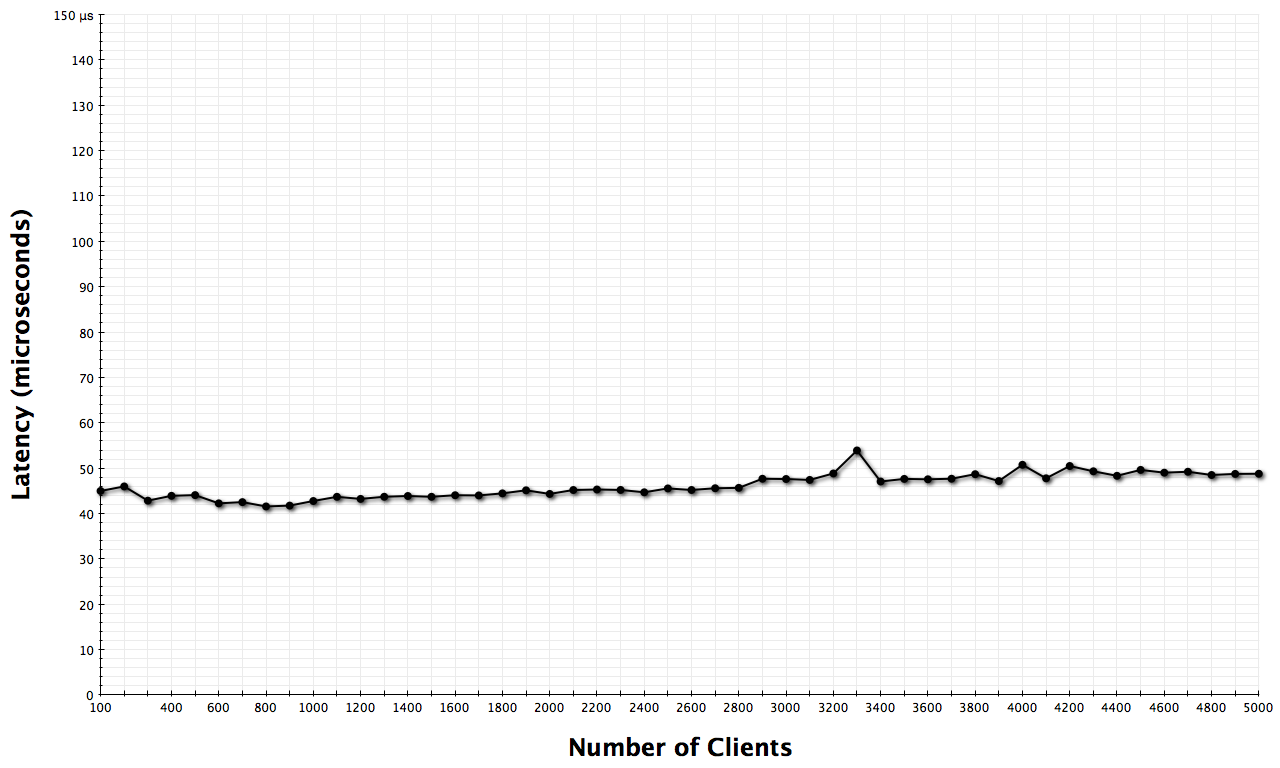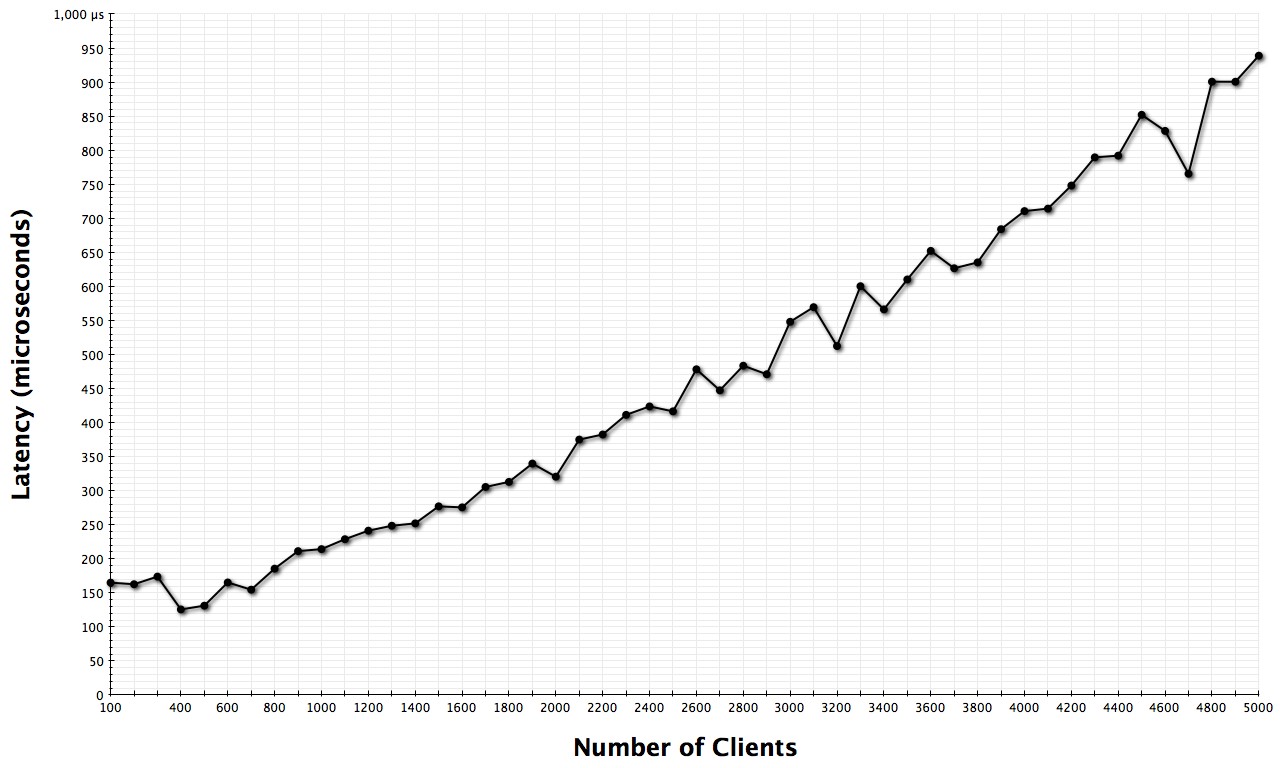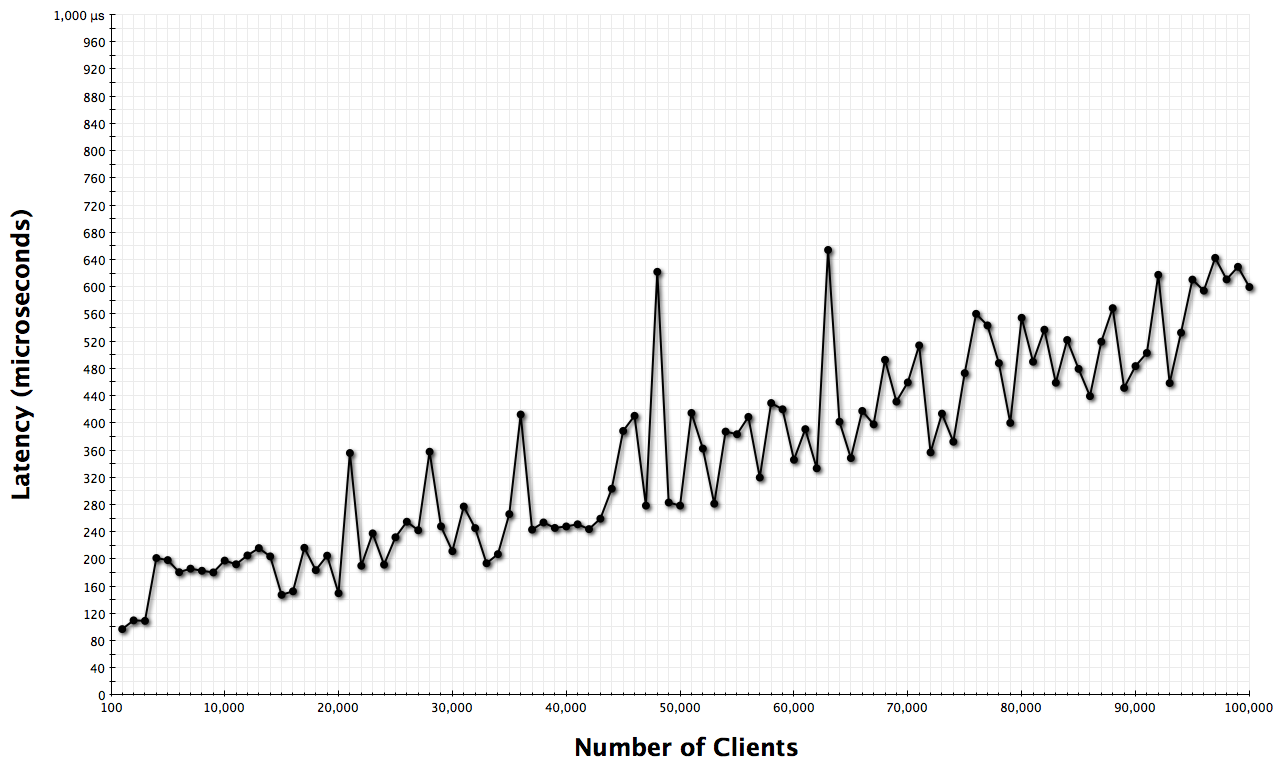Realm Benchmarks
The benchmarks detailed in this section of the website are designed to give indications of the performance levels achievable with Universal Messaging.
These benchmarks and their accompanying results are presented as a guide only. They provide indications of the levels of performance for the given context in which they have been run. Performance in contexts or environments different to one we present are likely to give different results.
The performance of these benchmarks is limited primarily by the available network infrastructure and machine which the Universal Messaging Realm Server resides on. The results were produced by running the benchmark using commercially available machines which may typically be used to host services in an enterprise environment.
If you would like access to the benchmarking tools to run these tests yourselves, please email our support team.
Test Scenarios
Descriptions of several tests are detailed below, with each test running with a different configuration to provide indications of performance in varying types of context. These tests include:

High Update Rates with Multi-cast delivery

High Update Rates

Medium Update Rates

Low Update Rates
The low and medium rate tests are designed to model traffic which may be typical of non-time critical applications which may instead focus the number of concurrent connections a server can handle.
The high rate tests are designed to model latency critical applications which use small, frequent messages. This kind of traffic is more typical of trading systems which some of our customers deploy.
High Update Rate (Using Multi-Cast Delivery)
Multi-cast delivery is a feature that allows for ultra low latency delivery of streaming data to clients. The characteristics of the test are the same as the high update rate test, leveraging the benefits of multi-cast delivery to cope with the most demanding performance requirements.
DataGroups | 500 |
Clients | 5,000 |
Increment Rate | 100 every 60 seconds |
Subscriptions per Client | 50 |
Messages per second per Client | 50 |
Peak Message Rate | 250,000 |
High Update Rate
The high update rate test is designed to model applications which require low latency delivery times for data which is streamed in small intervals to a small set of clients. These characteristics are often found in trading systems.
DataGroups | 500 |
Clients | 5,000 |
Increment Rate | 100 every 60 seconds |
Subscriptions per Client | 50 |
Messages per second per Client | 50 |
Peak Message Rate | 250,000 |
Medium Update Rate
The medium update rate test is designed to model applications which require low latency delivery times to data which is streamed to clients at a moderate rate.
DataGroups | 500 |
Clients | 30,000 |
Increment Rate | 100 every 60 seconds |
Subscriptions per Client | 10 |
Messages per second per Client | 10 |
Peak Message Rate | 300,000 |
Low Update Rate
The low update rate test is designed to model services which update infrequently with the focus on scaling delivery to large numbers of clients in a reasonable time frame.
DataGroups | 500 |
Clients | 100,000 |
Increment Rate | 1,000 every 60 seconds |
Subscriptions per Client | 1 |
Messages per second per Client | 1 |
Peak Message Rate | 100,000 |
JavaScript High Update Rate
The JavaScript High Update Rate test uses headless simulation clients which communicate with the server using the WebSocket protocol. This provides an indication of the ability of the Universal Messaging Realm Server to scale to serve large numbers of web clients.
DataGroups | 500 |
Clients | 5,000 |
Increment Rate | 100 every 60 seconds |
Subscriptions per Client | 50 |
Messages per second per Client | 50 |
Peak Message Rate | 250,000 |



